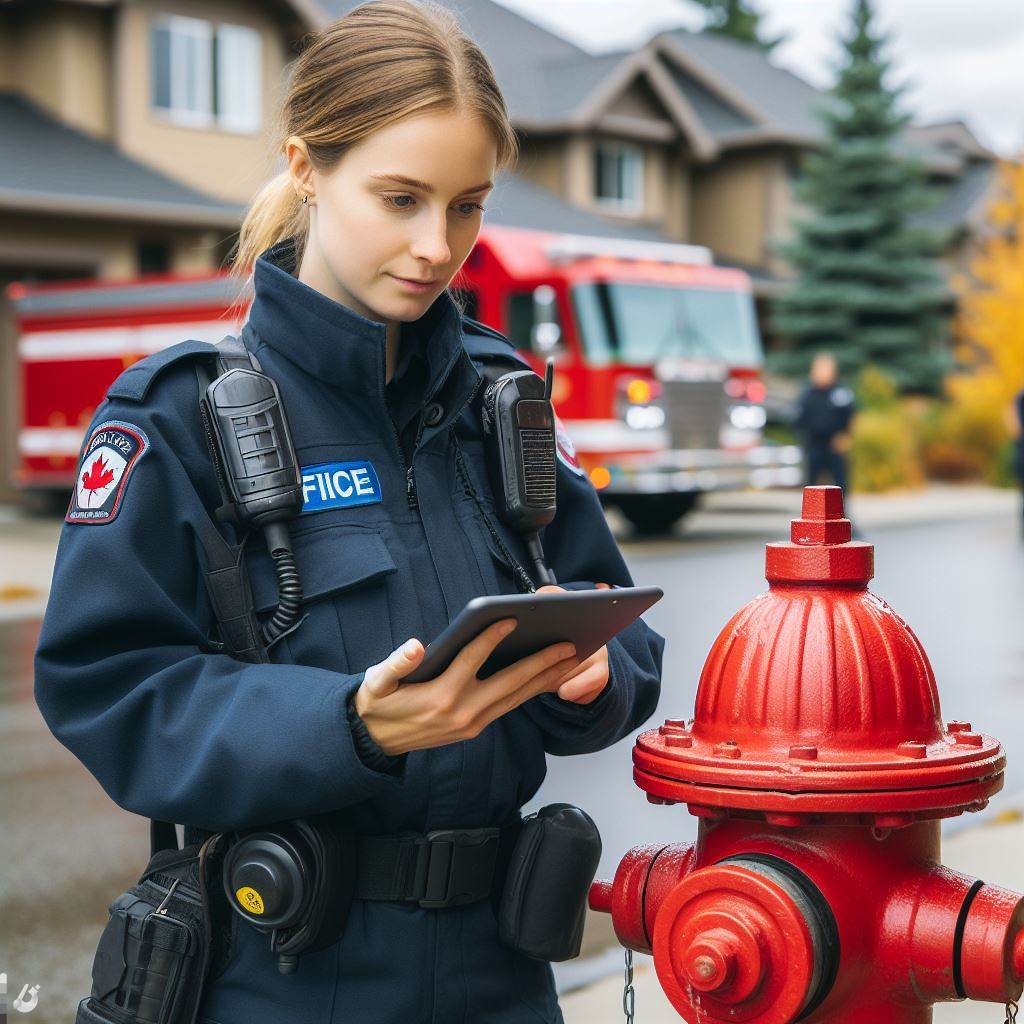Introduction
A. Brief overview of the Canadian policing system
Canada’s policing system is diverse, reflecting the nation’s vast geography and multicultural population.
Policing, a critical element in maintaining law and order, is administered at various levels—federal, provincial, and municipal.
B. Policing in rural and urban areas
- Distinct challenges: Policing in rural areas confronts vast landscapes, limited resources, and isolated communities.
Conversely, urban policing contends with population density, diverse cultures, and complex criminal dynamics. - Resource allocation: Rural policing demands strategic resource distribution to cover expansive regions effectively.
Urban areas require concentrated resources to manage higher crime rates and diverse policing needs. - Community engagement: Rural policing emphasizes close-knit relationships, fostering trust within small communities.
Urban policing involves multifaceted community engagement, addressing diverse needs and concerns in populous settings.
In examining these differences, we delve into the unique complexities shaping the landscape of law enforcement across Canada’s rural and urban domains.
Characteristics of Policing in Rural Areas
A. Definition and Explanation of Rural Areas
Rural areas are typically characterized by low population density and extensive agricultural landscapes.
Unlike urban areas, rural communities often lack the hustle and bustle commonly associated with city life.
Instead, they offer a slower pace of living and a strong sense of tight-knit community.
B. Focus on Community-Oriented Policing
Policing in rural areas places a significant emphasis on community-oriented policing.
This approach involves building partnerships between police departments and the community to solve problems and address concerns collectively.
Rural police officers actively engage with community members to identify local priorities, develop targeted strategies, and enhance public safety.
C. Limited Resources and Challenges Faced by Rural Police Departments
Rural police departments face unique resource limitations and challenges.
Economic constraints often result in limited budgets, restricted access to modern technology, and fewer personnel.
Additionally, the vast geographical areas rural police departments cover can pose logistical difficulties.
Responding to incidents quickly and efficiently becomes more challenging due to longer response times and the need to cover expansive territories.
D. Importance of Building Strong Relationships with the Community
In rural areas, building strong relationships with the community is essential for effective policing.
Trust and open communication between police officers and residents are vital to bridge gaps, increase cooperation, and facilitate the sharing of information.
By developing these relationships, rural police officers gain valuable insights into local concerns and potential threats.
E. Examples of Successful Community Programs in Rural Areas
Several successful community programs have been implemented in rural areas, reinforcing the effectiveness of community-oriented policing:
- Neighbourhood Watch: In rural communities, residents collaborate with the police to prevent crime, share information, and enhance overall security of the area.
- Rural Crime Watch: This program encourages community members to actively report suspicious activities and assist the police in preventing rural crimes. It promotes a vigilant community that works together with law enforcement.
- Youth Outreach Initiatives: Rural police departments often prioritize engaging with local schools and youth organizations.
Programs such as Drug Abuse Resistance Education (DARE) and school resource officer initiatives help foster positive relationships between law enforcement and young individuals while addressing youth-related issues effectively.
By implementing these community programs, rural police departments can strengthen bonds with the community, improving overall safety and quality of life.
In short, policing in rural areas presents unique challenges and demands tactical approaches tailored to the specific needs of these communities.
Community-oriented policing, resource management, and fostering strong relationships are crucial elements in ensuring effective law enforcement services in rural areas.
By working hand in hand with the community, rural police departments have the potential to achieve significant positive impact and enhance public safety.
Read: The Evolution of Canadian Police Uniforms
Characteristics of Policing in Urban Areas
A. Definition and Explanation of Urban Areas
Urban areas are typically defined by their high population density, consisting of large cities, towns, and their suburbs.
These regions are buzzing with activity, filled with diverse communities, and present a multitude of challenges for law enforcement.
B. Emphasis on Crime Prevention and Rapid Response
In urban environments, police forces focus on proactive measures, with a strong emphasis on crime prevention.
Unlock Your Career Potential
Visualize a clear path to success with our tailored Career Consulting service. Personalized insights in just 1-3 days.
Get StartedThey implement various strategies, such as increased patrols, community engagement, and targeted enforcement, to deter criminal activities.
Rapid response to emergencies is another critical aspect of policing in urban areas.
With large populations and higher crime rates, efficient emergency response systems are vital to ensure public safety.
C. Complexity and Diversity of Policing Challenges in Urban Environments
Policing in urban areas is far more complex and diverse compared to rural regions.
Urban environments attract people from various backgrounds, cultures, and socioeconomic statuses, resulting in an amalgamation of unique challenges for law enforcement.
From addressing social issues like homelessness, drug abuse, and mental health crises to managing traffic congestion and maintaining public order during events or protests, urban police forces must navigate through a wide range of challenges.
D. Struggles with High Crime Rates and Gang Activities
Urban areas often experience higher crime rates, particularly in densely populated neighborhoods.
Gang activities are prevalent, contributing to elevated levels of violence, drug trafficking, and organized crime.
Police forces in urban areas must continuously adapt their strategies to combat these challenges effectively, focusing on community partnerships, intelligence gathering, and targeted enforcement efforts.
E. Collaborative Efforts with Various Agencies and Specialized Units
Tackling the complexities of urban policing necessitates collaboration with a diverse range of agencies and specialized units.
Police forces work hand-in-hand with organizations such as social services, mental health agencies, and community groups to address underlying issues contributing to criminal activities.
Additionally, specialized units, including undercover operations, SWAT teams, and organized crime units, are crucial components of urban policing.
These units provide expertise and resources necessary to combat the unique challenges faced by law enforcement in urban environments.
In fact, policing in urban areas differs significantly from rural regions due to the distinct characteristics and challenges present in densely populated environments.
The focus on crime prevention, rapid response, collaboration with various agencies, and specialized units ensures the maintenance of public safety in urban areas despite their complex and diverse nature.
Read: Salary and Benefits of Police in Canada
Comparison of Policing Approaches in Rural and Urban Areas
A. Differences in patrol strategies and response times
- Rural areas often rely on reactive policing, responding to incidents as they occur.
- Urban areas adopt proactive strategies with increased patrols and visible police presence.
- Response times in rural areas are typically longer due to vast distances and limited resources.
- Urban areas benefit from quicker response times, given their proximity to police stations and higher manpower.
B. Contrasting levels of crime and types of offenses
- Rural areas generally experience lower crime rates and have a smaller range of offenses.
- Urban areas face more significant challenges with higher crime rates and diverse types of offenses.
- Crimes in rural areas tend to be related to property, such as theft and vandalism.
- Urban areas deal with a broader spectrum of crimes, including violent offenses and organized crime.
C. Importance of community engagement and outreach programs in both areas
- Community engagement is vital in rural areas to enhance trust and foster cooperation with limited resources.
- Urban areas require extensive community outreach programs to address diverse populations and unique challenges.
- Building relationships and partnerships with the community help prevent and solve crimes in both settings.
- Strong community ties enable police to gather vital information and gain support in criminal investigations.
D. Integration of technology and innovation in urban policing
- Urban areas leverage advanced technology like surveillance cameras, data analytics, and predictive policing.
- Cutting-edge tools aid in crime analysis, resource allocation, and proactive crime prevention.
- Urban police departments utilize social media platforms to engage the community and disseminate relevant information.
- Technological advancements enable urban police forces to adapt quickly to evolving criminal tactics.
E. Collaboration and mutual support between rural and urban police departments
- Rural and urban police departments collaborate in joint operations to combat shared challenges like drug trafficking.
- Sharing intelligence, resources, and expertise enhance policing effectiveness in both rural and urban areas.
- Rural areas benefit from the specialized skills of urban police forces during complex investigations.
- Urban police departments learn from the resourcefulness and community-focused approach of their rural counterparts.
In essence, policing in rural and urban areas differs significantly.
Rural areas face unique challenges related to distance and limited resources, while urban areas contend with higher crime rates and diverse criminal activities.
Both settings emphasize the importance of community engagement and outreach programs.
Urban areas employ advanced technology and innovative strategies, while collaboration between rural and urban police departments enhances overall effectiveness.
Understanding these differences helps shape more effective policing strategies that cater to the specific needs of each community.
Read: Understanding Canadian Police Hierarchy

Challenges and Opportunities in Policing Rural and Urban Areas
A. Unique Challenges Faced by Police Officers in Rural Areas
- Limited resources in terms of manpower and equipment impact response times and efficiency.
- Large geographical areas make it difficult to cover and monitor all locations effectively.
- Sparse population density leads to lower crime rates, requiring officers to handle a wider range of situations.
- Limited access to specialized services such as forensic labs or SWAT teams can hinder investigations.
- Lack of diversity in crime types can make it challenging for officers to gain expertise in specific areas.
- Close-knit communities can create difficulties when investigating local crimes due to social connections.
B. Specific Challenges Faced by Urban Police Officers
- High population density results in a higher volume of crime and calls for service.
- Gang-related violence, organized crime, and drug trafficking pose greater threats in urban areas.
- Proximity to vulnerable populations (e.g., homeless individuals) increases the demand for social services.
- Traffic congestion and crowded public spaces make it harder to prevent and respond to crimes.
- Diversity and multiculturalism require officers to navigate various cultural norms and languages.
- Advanced technology reliance necessitates continuous training to keep up with ever-evolving cyber threats.
C. Opportunities for Learning and Sharing Best Practices between Rural and Urban Policing Strategies
- Rural and urban police departments can exchange knowledge and experiences to improve policing approaches.
- Collaborative training programs can be developed to address common challenges faced by both areas.
- Information sharing platforms can help disseminate successful strategies and tactics between departments.
- Joint task forces can be established to tackle cross-jurisdictional crimes that impact both rural and urban areas.
- Urban officers can learn about community-oriented policing practices from rural counterparts.
- Rural officers can benefit from urban departments’ expertise in handling high-stress situations.
D. Importance of Adapting to Changing Community Dynamics and Emerging Issues
- Policing strategies must evolve to address new and emerging crimes, such as cybercrime and identity theft.
- Ongoing training and education programs should be implemented to keep officers updated on modern challenges.
- Community engagement initiatives are crucial to build trust and collaboration with residents in both settings.
- Adaptive and flexible approaches to policing enable officers to respond effectively to dynamic community needs.
- Regular assessments and feedback from community members help tailor policing methods accordingly.
- Continuous evaluation and improvement of policies and procedures are essential for maintaining public trust.
Generally, policing in both rural and urban areas comes with distinct challenges and opportunities.
While rural officers face limitations due to resources and geographic coverage, urban officers encounter higher crime rates and diverse populations.
However, by fostering collaboration, sharing best practices, and adapting to changing dynamics, police departments can better serve their respective communities, ultimately creating safer environments for all.
Read: How Canadian Police Engage with Communities
Conclusion
A. Recap key points discussed in the blog post
- Policing dynamics differ in rural and urban areas.
- Resource allocation impacts law enforcement effectiveness.
- Community engagement is crucial for trust-building.
B. Reinforce the importance of effective policing in both rural and urban areas
- Every community deserves responsive and accountable policing.
- Tailored strategies address unique challenges in diverse settings.
- Crime prevention requires a holistic, community-centric approach.
C. Encouraging ongoing collaboration and support between different policing jurisdictions
- Break down silos for seamless information sharing.
- Cross-training enhances versatility in handling varied scenarios.
- Joint initiatives amplify the impact of crime-fighting efforts.
In closing, bridging the rural-urban policing gap demands adaptability, shared resources, and sustained cooperation.
Let’s ensure safer communities through united, proactive law enforcement.




